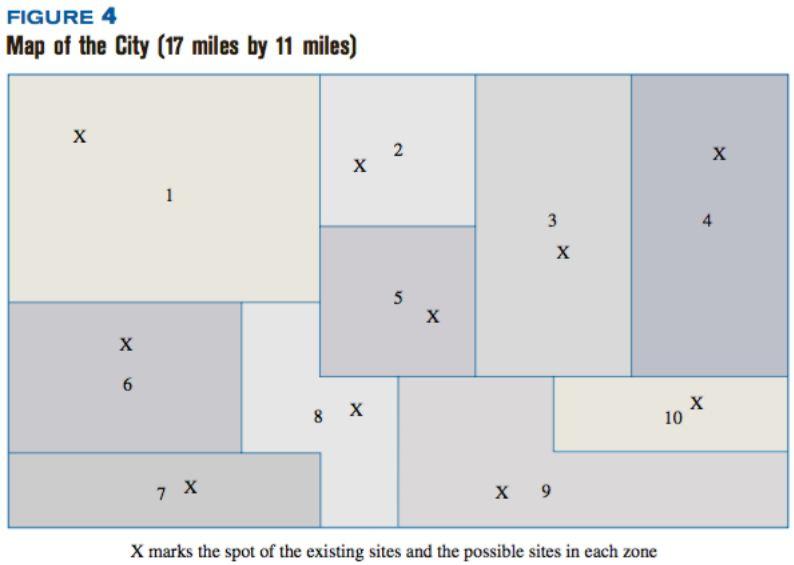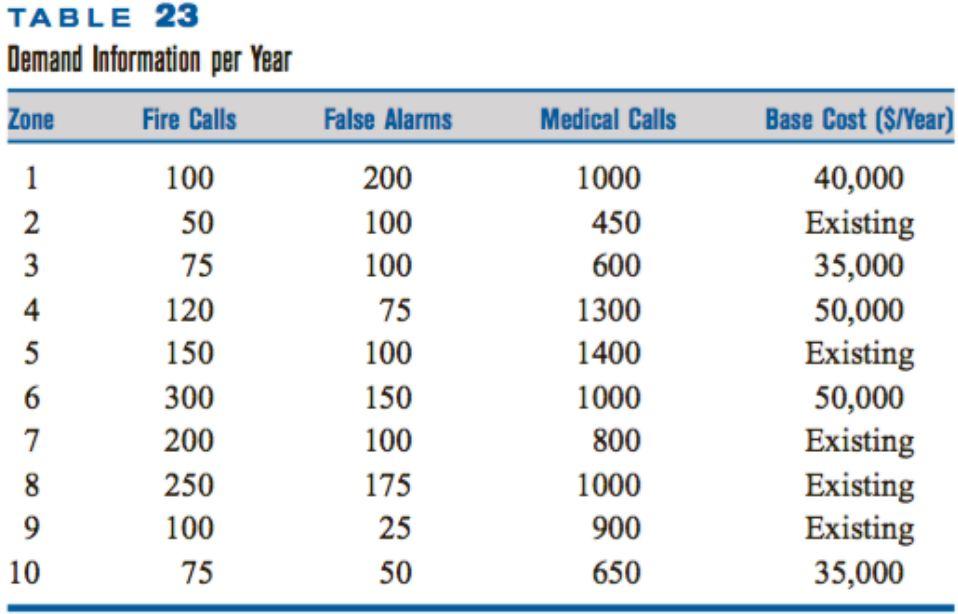Question
You are the logistics manager for the Springfield Fire Department. You are to develop a recommendation for providing emergency service to Springfield. The departments resources
You are the logistics manager for the Springfield Fire Department. You are to develop a recommendation for providing emergency service to Springfield. The department’s resources include engine trucks, ladder trucks, and paramedic vehicles. The budget suggests a total of 15 vehicles are fundable in the coming year. Currently, seven engines, three ladder trucks, and five paramedic vehicles are in operation. This system runs 24 hours per day.

The city has been divided into 10 zones (see Figure 4). The map is drawn to scale. For each zone, the department has estimated the number of fire calls, the number of false alarms, and the number of medical calls per 12-hour day. These data are listed in Table 23. Currently, there are five fire stations in the city; Çthese are listed in Figure 4. Each existing station costs $20,000 per year to operate. The yearly costs for each potential station (including the amortized cost of construction) are also listed in Table 23. Each station can hold two vehicles at most.

TABLE 23
For fire calls, an engine and a ladder truck must respond. For medical calls, a paramedic vehicle always responds and an engine also goes when one is available and closer than the nearest paramedic vehicle. On average, fire calls take 2.5 hours, false alarms 10 minutes, and medical calls 45 minutes. When vehicles are dispatched on a call, the closest idle vehicle is dispatched first. If no vehicles are idle, then the call must be sent to a private provider; these responses cost the city $5,000 per medical call, $15,000 per fire call, and $200 per false alarm. There is no queuing. The street network is largely rectangular, and the fire department estimates that the cost per mile for travel is $1.50 per mile for engines and ladders and $0.75 per mile for paramedic units. Your job is to design a system for the fire department. The questions that should be considered are these:
What sites should be selected and how should the vehicles be distributed?
If travel gets more expensive, how is the recommendation affected?
If the cost of using the private provider increases, then how should the system be changed?
Is all of this equipment needed to serve the public?
How much more demand can be handled with the full complement of vehicles?
FIGURE 4 Map of the City (17 miles by 11 miles) X X 6 1 7 X X 8 X 2 5 X 3 X 9 X X marks the spot of the existing sites and the possible sites in each zone 10 X 4 X
Step by Step Solution
3.38 Rating (157 Votes )
There are 3 Steps involved in it
Step: 1

Get Instant Access to Expert-Tailored Solutions
See step-by-step solutions with expert insights and AI powered tools for academic success
Step: 2

Step: 3

Ace Your Homework with AI
Get the answers you need in no time with our AI-driven, step-by-step assistance
Get Started


